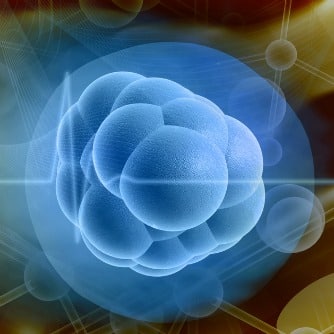In general, physicians and patients alike believe that stem cells are the future of medicine. According to Roger Pedersen, Professor of Regenerative Medicine and Director of the Anne McLaren Laboratory for Regenerative Medicine at the University of Cambridge, it is possible that stem cells will even be used to replace drugs (see “Stem Cells: The Future of Medicine?”[1]. However, Pederson points out that stem cells don’t fit the typical pharmaceutical business model, which is structured around putting medicines in people, “because [stem] cells are alive and can replicate inside the patient.” Consequently, according to Pederson, we may find that stem cells are even more powerful and flexible than we imagined.”
A Japanese researcher, Nobel laureate Shinya Yamanaka, collected genes from mature adult skin tissue and reprogrammed them to become “‘pluripotent,” which is a stem cell characteristic that means a cell is able to differentiate into multiple types of cells (see “iPS cells and reprogramming: turn any cell of the body into a stem cell,” Sept. 15, 2015, www.eurostemcell.org)[2]. This conversion process, referred to as “induced pluripotent stem cells” (iPSCs), means that we can take adult cells from a person with a particular disease, turn them into iPSCs, and then induce the iPSCs to turn into different types of body cells. In commenting on Yamanaka’s iPSC findings, Pedersen says we can essentially “make any cell turn into any other type of cell and in effect move through wormholes in developmental time” to produce such things as a pancreas from skin tissue.” As a result, “the petri dish becomes an avatar of the patient” whereby medicines can be identified “that will improve the condition of cells in the patient without having to take cells out of the petri dish and put them back in the patient.”
Nevertheless, if the future of medicine is using stem cells to develop patient specific medicines or tissues in a laboratory then how can we benefit from using such stem cells in a clinical practice today? Currently, the two most common means for harvesting “stem cells” from a patient are by having a procedure done to obtain either blood from bone marrow or fat from liposuction. Both of these procedures are invasive and come with their own inherent risks. They each take anywhere from 1-2 hours to perform and require recovery time post-procedure. Unfortunately, neither of these procedures provides pluripotent stem cells, such as those needed for diverse tissue differentiation in a laboratory. Rather, these procedures produce mesenchymal cells, which work well for cardiovascular and orthopedic conditions because these tissues are the end organ targets for mesenchymal cells. However, they do not work well for other germ cell layer target organs, such as those produced from endoderm (incl., pancreas, liver, lungs) and ectoderm (incl., nervous system, skin).
Fortunately, there is a lesser known but more viable means for obtaining real pluripotent stem cells that merely involves a blood draw. In 2005, a study published in Minerva Biotechnologica identified stem cells in the blood (see “Adult-derived stem cells,”, Vol. 17, No. 2:55-63 (2005)[3]. In other follow-up studies, scientists showed that such cells could, in fact, be used to regenerate not only heart tissue, but brain, lung, and pancreas as well. What’s most interesting is that these cells were found to be increased when subjects ingested a blue-green algae product. This was initially demonstrated in a 2007 study where the level of pluripotent stem cells was shown to increase in equine blood after 6 hours from the initial dose (see “Totipotent Stem Cells are present in the Blood of Adult Equines,” Keystone Symposium (2007)[4]. These same stem cells were also found to be increased in the blood of humans by using the same algae product as used in horses.
In 2010, a clinical protocol was developed for harvesting, concentrating, reconstituting, and administering pluripotent stem cells obtained from autologous blood (see “Method of Stimulating and Extracting Non-embryonic Pluripotent Cells from Mammal Blood and Using Reconstituted Pluripotent Cells to Treat Disease Including Chronic Obstructive Pulmonary Disease,” Royal et al., USPTO Application Number 13362993 (2011)[5]. Initially, the protocol was used in the treatment of COPD patients because such cells could not only be given via intranasal, intravenous, intraspinal, and intravenous routes but nebulized as well. One of the initial COPD patients came from Houston, Texas where she was in a physical therapy group with 11 other COPD patients. Today, she is the only living survivor from the group and continues to receive a stem cell treatment biannually. While she still has COPD, the third leading cause of death in the United States that kills over 130,000 Americans annually, her oxygen saturation rates remain in the high 90’s.
It should be noted that in spite of the foregoing patient success, the use of stem cells for clinical applications is in its infancy. Physicians still have much to learn about how to more effectively utilize pluripotent stem cells in their practice for the benefit of their patients. Such knowledge includes not only using the most appropriate source for harvesting real stem cells but in improving the means of attracting those stem cells to where they are needed and facilitating their differentiation. As more physicians implement the use of pluripotent stem cells in their practice, such as those obtained from autologous blood, we can begin accumulating the objective data needed to validate stem cells in the present and advance stem cell science into the future.
by Daniel F. Royal, DO, HMD, JD
Turtle Healing Band Clinic, Las Vegas, NV




